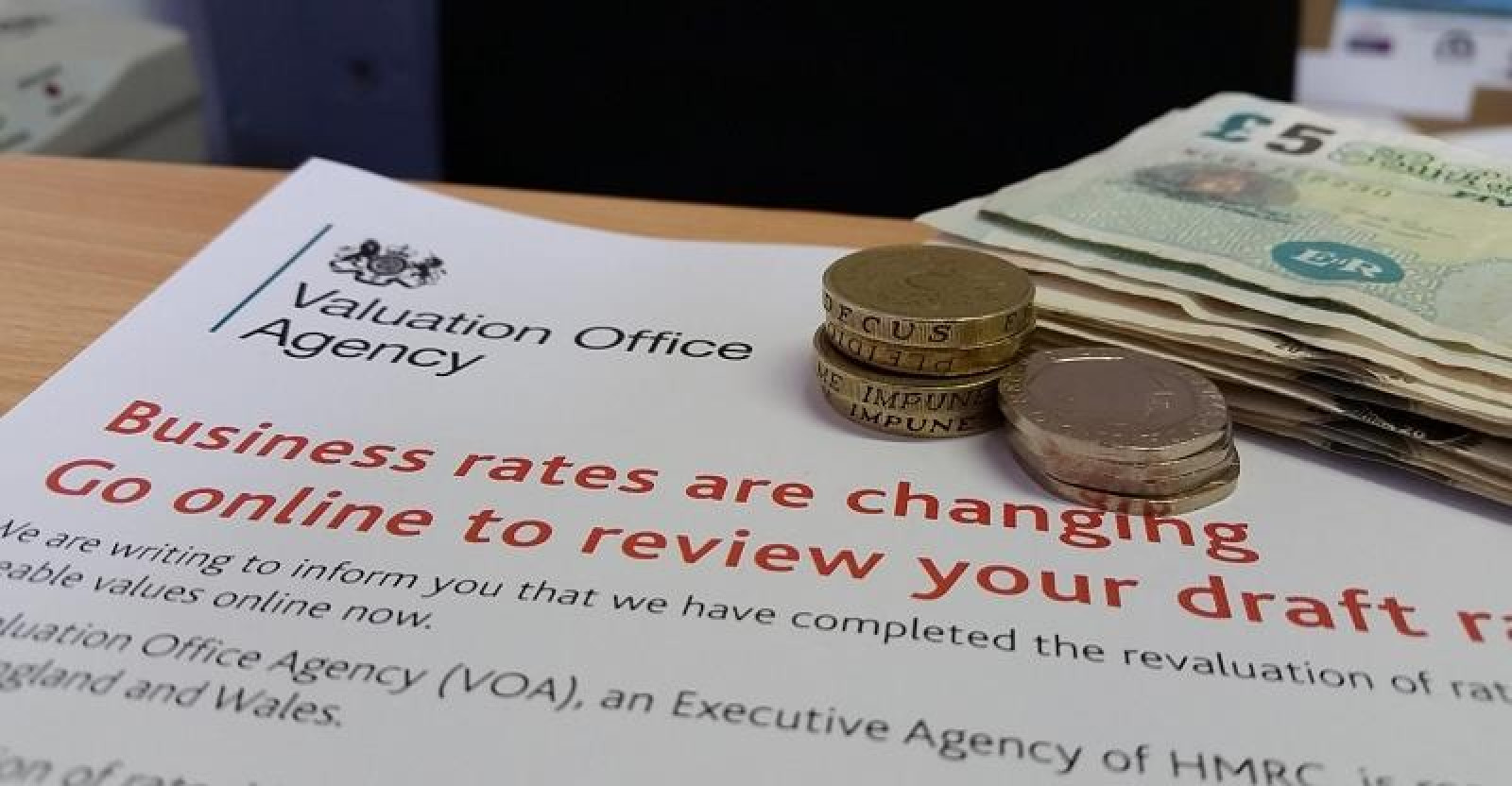VOA Business rates, known as non-domestic rates, tax commercial properties in England and Wales. They raise over £25 billion each year for public services. These rates fund critical infrastructure like roads, schools, and emergency services. The Valuation Office Agency (VOA) runs the system. It gives each property a rateable value (RV) based on what it could earn in open market rent.
In this article, we’ll cover what you need to know. We’ll talk about rate calculations, relief options, and future changes.
What Are VOA Business Rates?
A municipal tax called business rates is imposed on the majority of non-domestic properties. These rates help pay for local services. This includes schools, emergency services, and infrastructure. The VOA checks commercial properties to find their rateable value. Local councils use this value to set business rates bills.
Who Pays Business Rates?
You must pay VOA business rates if you use a property (or part of it) for non-domestic purposes. This includes:
- Shops, offices, and retail outlets.
- Restaurants, pubs, and hotels.
- Factories and warehouses.
- Business units and commercial premises.
- Stables, beach huts, and other non-domestic structures.

Exempt Properties
Some properties are exempt from business rates, including:
- Agricultural land and buildings (such as farms).
- Religious institutions (churches, mosques, temples, etc.).
- Properties used for the welfare of disabled individuals.
- Specific public spaces, including some sports clubs.
If a business qualifies for Small Business Rate Relief (SBRR), it may not need to pay business rates.
The Role of the Valuation Office Agency (VOA)
The VOA is an executive agency of HMRC responsible for:
- Assessing and maintaining the rating list of commercial properties.
- Assigning rateable values based on rental market data.
- Handling disputes via the Check-Challenge-Appeal (CCA) process.
A London office with an RV of £50,000 incurs an annual payment of £25,600, based on the 2023 multiplier of 0.512. Errors in floor area or classification can inflate this figure.
How we calculate VOA business rates
The formula combines three elements:
- Rateable Value (RV): Based on rental value as of April 2021.
- Multiplier (UBR): Set by the government (51.2 p per £1 in 2023).
- Reliefs: Discounts for eligible businesses.
Calculation Example:
- RV: £30,000
- UBR: £30,000 × 0.512 = £15,360/year
- With Retail Relief (75% off): £3,840 per year
Sector-Specific Multipliers:
- Industrial properties often face higher RVs due to e-commerce demand.
- Retail and hospitality sectors saw 10–15%RV reductions post-2023.
How to Check and Challenge Your VOA Business Rates
If you think your VOA business rates are too high, you can check, challenge, or appeal your rateable value.
Check Your Rateable Value
- Visit gov.uk/find-business-rates.
- Search for your property and review the rateable value.
- Compare it with similar properties to identify discrepancies.
Submit a Check (Correction Request)
- If you see an error, submit a check request through your Business Rates Valuation Account.
- Provide supporting evidence (e.g., floor plans, lease agreements, photographs).
- The VOA will review your request and either update the valuation or reject the claim.
Challenge the Valuation
- If your check request is unsuccessful, you can submit a formal challenge to the valuation.
- Submit a detailed argument on why you believe the valuation is incorrect.
- The VOA will conduct a review and provide a final decision.
Appeal to the Valuation Tribunal
- If you don’t agree with the VOA’s decision, you can take it to an independent Valuation Tribunal.
- This is a legal process and must have professional representation.
2023 Revaluation: Key Changes and Sector Impacts
The first reevaluation since 2017 addressed post-pandemic market shifts.
| Sector | RV Change | Reason |
| Retail | ▼ 10% | High street decline: online shopping |
| Warehouses | ▲ 12% | Surge in logistics demand |
| Hospitality | ▼ 7% | Pandemic recovery lags |
Transitional Relief: Caps annual increases to soften the blow.
- Small properties (RV <£20k): Max 5% rise per year.
- Large properties (RV > £100k): Max 30% rise per year.
Common Errors and Disputes
Top Reasons for Challenges:
- A Manchester café cut its RV by 20%. It showed that the VOA.
- A Bristol gym changed its classification from “leisure” to “community use.” This change saved £8,000 a year.
- Outdated Rental Data: A Birmingham office used 2022 lease agreements to lower its RV.
Dispute Resolution Timeline:
- Check Stage: 3 months (informal corrections).
- Challenge Stage: 6–12 months (formal review).
- Appeal Stage: 12+ months (Valuation Tribunal).
Proven Strategies to Reduce Business Rates
Cutting business rates can save companies thousands of pounds every year. Below are some effective strategies:
Apply for Business Rate Relief
Many businesses qualify for rate relief. The most common options include:
- Small Business Rate Relief (SBRR): If your property’s rateable value is below £15,000, you may receive up to 100% relief.
- Retail, Hospitality & Leisure Relief: Eligible businesses can receive discounts of up to 75%.
- Rural Rate Relief: If your business is in a rural area, you may receive a 100% exemption.
Ensure Your Property’s Details Are Correct
Errors in your property’s size, classification, or use can lead to higher business rates. Make sure to verify the information the VOA holds about your property.
A) Maximize Relief Schemes
- Small Business Rate Relief (SBRR): 100% discount for RVs under £12k.
- Retail, Hospitality & Leisure Relief (RHLR): 75% discount until 2024.
- Charitable Exemptions: Full relief for registered charities.
B) Correct Property Details
Use the VOA’s Find a Property Tool to verify:
- Net Internal Area (NIA) for offices.
- Gross Internal Area (GIA) for warehouses.
C) Downsize or sublet
- A Leeds retailer sublet 30% of its space, cutting its RV from £18k to £12k and qualifying for SBRR.
Step-by-Step Guide to Challenging Your Valuation
1. Gather evidence
- Lease agreements, floor plans, photos, and comparable RVs.
2. Submit a check
- Correct factual errors via your VOA Business Rates account.
3. File a Challenge
- Argue against the RV using market data (e.g., lower rents post-COVID).
4. Appeal to the tribunal
- Hire a RICS-certified surveyor for complex cases.
Future Reforms and Long-Term Planning
Upcoming Changes:
- 3-Year Revaluations: Starting in 2026, update rates as soon as market changes occur.
- Digital Tax Reporting: Mandatory updates on property changes.
- Online Sales Tax Proposals: Potential alternatives to business rates.
Action Plan:
- Conduct an annual audit of your RV.
- Join lobbying groups (e.g., Federation of Small Businesses).
Case Studies: Real-World Savings
1. Café Owner Saves £6k/Year
- Issue: RV inflated due to incorrect floor area.
- Solution: Submitted floor plans proving 15% less usable space.
- Result: RV reduced from £24k to £18k, qualifying for RHLR.
2. Warehouse Avoids £20k Hike
- Issue: Post-2023 RV increase of 25%.
- Solution: Used transitional relief to cap rises at 5% per year.
Conclusion
Business rates are important for running a commercial property in England and Wales. They affect a company’s finances and help pay for vital public services. The 2023 revaluation was a big change. It showed the new market realities after the pandemic. It lowered costs for struggling areas like retail and hospitality. At the same time, it raised rates for logistics hubs due to e-commerce growth.
Errors in valuation, outdated data, and misclassifications are common traps. They can lead to inflated liabilities for no reason. Proactive strategies can save you money. Use relief schemes like SBRR and RHLR. Also, correct property details and dispute inaccuracies through the CCA process. The case studies show how businesses have found ways to succeed.
They downsized to get reliefs and used transitional caps to handle sudden rate hikes. Upcoming changes will include revaluations every three years and digital tax reporting. These changes aim to make the system fairer and more responsive. For businesses, it’s important to stay informed. Auditing rateable values each year helps too.
Also, engaging with industry advocacy groups can reduce costs. Businesses can simplify taxes by knowing rateable values, multipliers, and reliefs. They should also act with urgency to challenge any errors. This approach helps them manage expenses and stay strong in a changing economy.
FAQs
1. How are business rates calculated?
The formula calculates business rates as follows:
Rateable Value (RV) × Multiplier (UBR)
The RV shows the property’s estimated open-market rent from April 2021. The government decides the UBR each year, setting it at 51.2p per £1 in 2023. Reliefs can help reduce your costs. Retail Relief gives a 75% discount. Small Business Rate Relief offers 100% off for RVs worth less than £12k.
2. What reliefs are available to reduce business rates?
Eligible businesses can access:
- Small Business Rate Relief (SBRR): Full exemption for RVs under £12k.
- Retail, Hospitality & Leisure Relief (RHLR): 75% discount until 2024.
- Transitional Relief: Caps annual increases post-revaluation (e.g., 5% for small properties).
- Charitable Exemptions: Full relief for registered charities.
3. How can I dispute an unfair rateable value (RV)?
Use the Check-Challenge-Appeal(CCA) process:
- Check: Correct factual errors (e.g., floor area) via the VOA portal.
- Challenge: Submit market evidence (e.g., lower rents) for a formal review.
- Appeal: Bring unresolved cases to the Valuation Tribunal. Involve a RICS-certified surveyor.
4. How did the 2023 revaluation impact different sectors?
The 2023 revaluation adjusted RVs to reflect post-pandemic market shifts.
- Retail/Hospitality: 10–15% reductions due to high street decline.
- Warehouses: 12% increase in e-commerce logistics demand.
- Transitional relief softens the blow for properties facing steep hikes.
5. What reforms are coming to the business rates system?
Upcoming changes include:
Potential Online Sales Tax may reduce reliance on traditional business rates.
Triennial Revaluations (2026): They update rates every 3 years (vs. 5–7 years).
Digital Tax Reporting: Mandatory updates for property changes.


